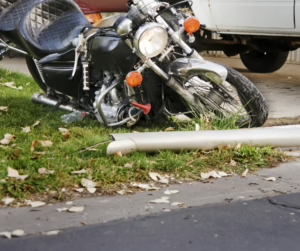How to Handle a Hit-and-Run Motorcycle Accident Case in Washington State


A hit-and-run motorcycle accident can leave riders unsure and in a state of shock. Our legal team can help – call us today.
Motorcycle accidents are frightening and often life-altering. When the at-fault driver flees the scene, the trauma is compounded by a sense of injustice and uncertainty. If you or a loved one has been the victim of a hit-and-run motorcycle accident in Washington State, you may be wondering what steps to take, how to cover your medical expenses, and whether justice is even possible.
At Abeyta Nelson Injury Law, we’ve helped countless injured motorcyclists navigate the legal aftermath of serious crashes, including those involving hit-and-run drivers. Below is a guide to help you understand your rights and options under Washington law.
Step 1: Prioritize Your Safety and Medical Care
Your health is the top priority. After a crash, call 911 immediately—even if the other driver has fled. Emergency responders can assist with injuries and file an official report. If you’re able, move to a safe location and accept medical attention at the scene or visit a hospital shortly after. Documenting your injuries early creates a critical paper trail for your case.
Step 2: Report the Hit-and-Run to Law Enforcement
In Washington, failing to stop at the scene of an accident is a criminal offense. According to RCW 46.52.020, drivers involved in an accident resulting in injury or death must remain at the scene and provide their name, address, and vehicle information. When someone flees, it becomes a hit-and-run felony offense if injuries are involved.
Make sure you file a police report, even if you believe the chances of finding the driver are slim. This report serves as essential documentation for your insurance claim and any future legal action.
Step 3: Gather Any Evidence You Can
If possible, take photographs of the scene, your injuries, and any debris or damage to your motorcycle. Try to note or recall any identifying details of the fleeing vehicle—make, model, color, or even partial license plate numbers. Speak with witnesses and ask for their contact information; their statements can be crucial in confirming the facts of the crash.
Surveillance footage from nearby businesses or residences may also help identify the hit-and-run driver. A skilled attorney can assist in locating and securing this footage before it’s erased or recorded over.
Step 4: Understand How Insurance Works in Hit-and-Run Cases
This is where things often get confusing for victims—but Washington State law offers protection.
If the at-fault driver is never found, your own auto insurance policy becomes the primary source of compensation. Washington insurers are required to offer Uninsured Motorist (UM) coverage as part of every policy unless you reject it in writing.
If you’ve accepted UM coverage, it typically covers:
- Medical expenses
- Lost wages
- Pain and suffering
- Motorcycle repairs or replacement
We’ve seen firsthand how this coverage has changed our clients’ lives. In one case, our client was rear-ended on his motorcycle by a speeding SUV that fled the scene. Though the driver was never located, our client had UM coverage. We were able to secure the full policy limits—giving him the financial stability he needed to recover from a broken leg and return to work months later.
If you’re not sure whether you have uninsured motorist protection, review your policy or contact your insurance agent. If you have it, it may cover both you and any passenger on your bike.
Step 5: Work With a Personal Injury Attorney
Hit-and-run cases are more complicated than standard accidents. There’s often no defendant to sue, so you’ll need to negotiate directly with your insurance provider—who may attempt to minimize or deny your claim. Working with an experienced motorcycle accident attorney can make all the difference.
At Abeyta Nelson, we understand Washington’s motor vehicle insurance laws and the unique challenges motorcyclists face. We can:
- Handle communication with your insurer
- Document and prove your damages
- Explore all possible sources of compensation
- Help you file a civil claim if the hit-and-run driver is later found
What If the Hit-and-Run Driver Is Identified?
If law enforcement identifies the driver, you may be able to pursue a personal injury lawsuit directly against them. This could lead to compensation beyond what your own insurance covers, including punitive damages in cases of egregious conduct.
Additionally, if the driver is caught and criminally charged, their conviction can be used as evidence in your civil claim.
Protect Yourself Before It Happens: Review Your Motorcycle Policy
We urge all Washington motorcyclists to check their policies today—not after a crash. In addition to Uninsured Motorist coverage, consider adding:
- Personal Injury Protection (PIP) if available
- Underinsured Motorist (UIM) coverage
- Collision and comprehensive coverage
These options can help ensure you’re financially protected even if the at-fault driver can’t—or won’t—take responsibility.
Hire Expert Accident Injury Lawyers in Yakima
No one ever expects to be the victim of a hit-and-run. But if it happens to you, know this: you are not alone, and you do have options under Washington law.
Our team at Abeyta Nelson has decades of experience representing motorcycle accident victims in Yakima, Ellensburg, Sunnyside and across Central Washington. We offer free consultations and never charge a fee unless we win your case.
Call us today at 509-575-1588 to speak with a motorcycle accident attorney who understands what you’re going through—and who’s ready to fight for your rights.